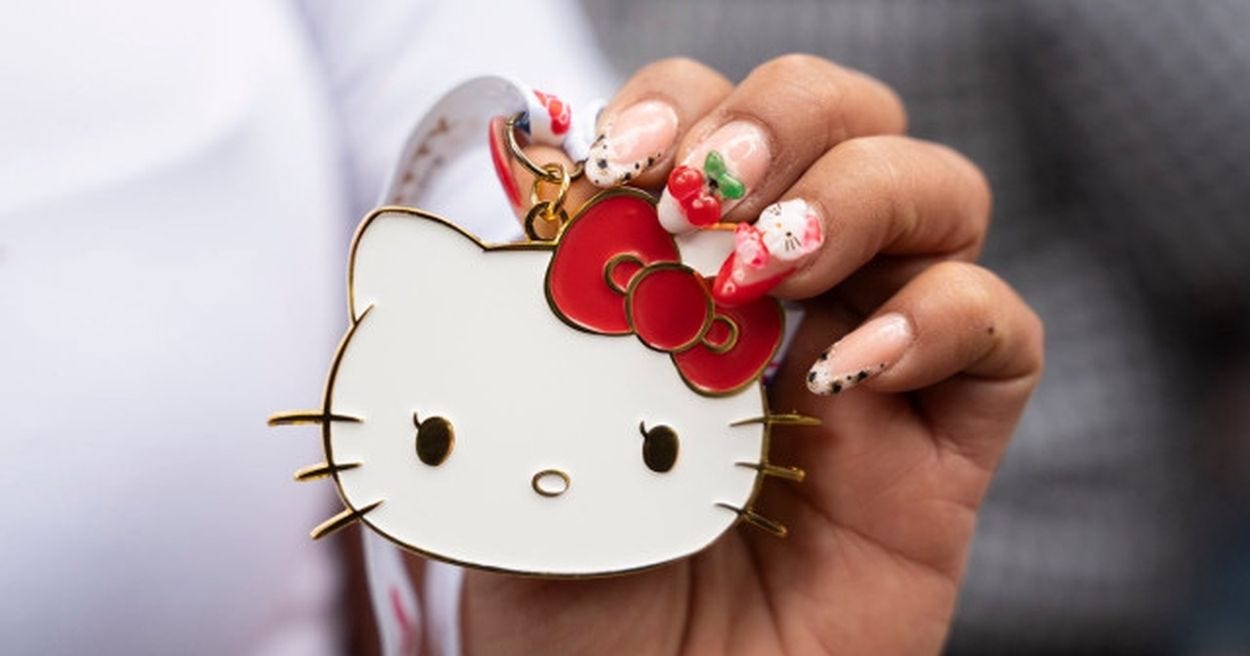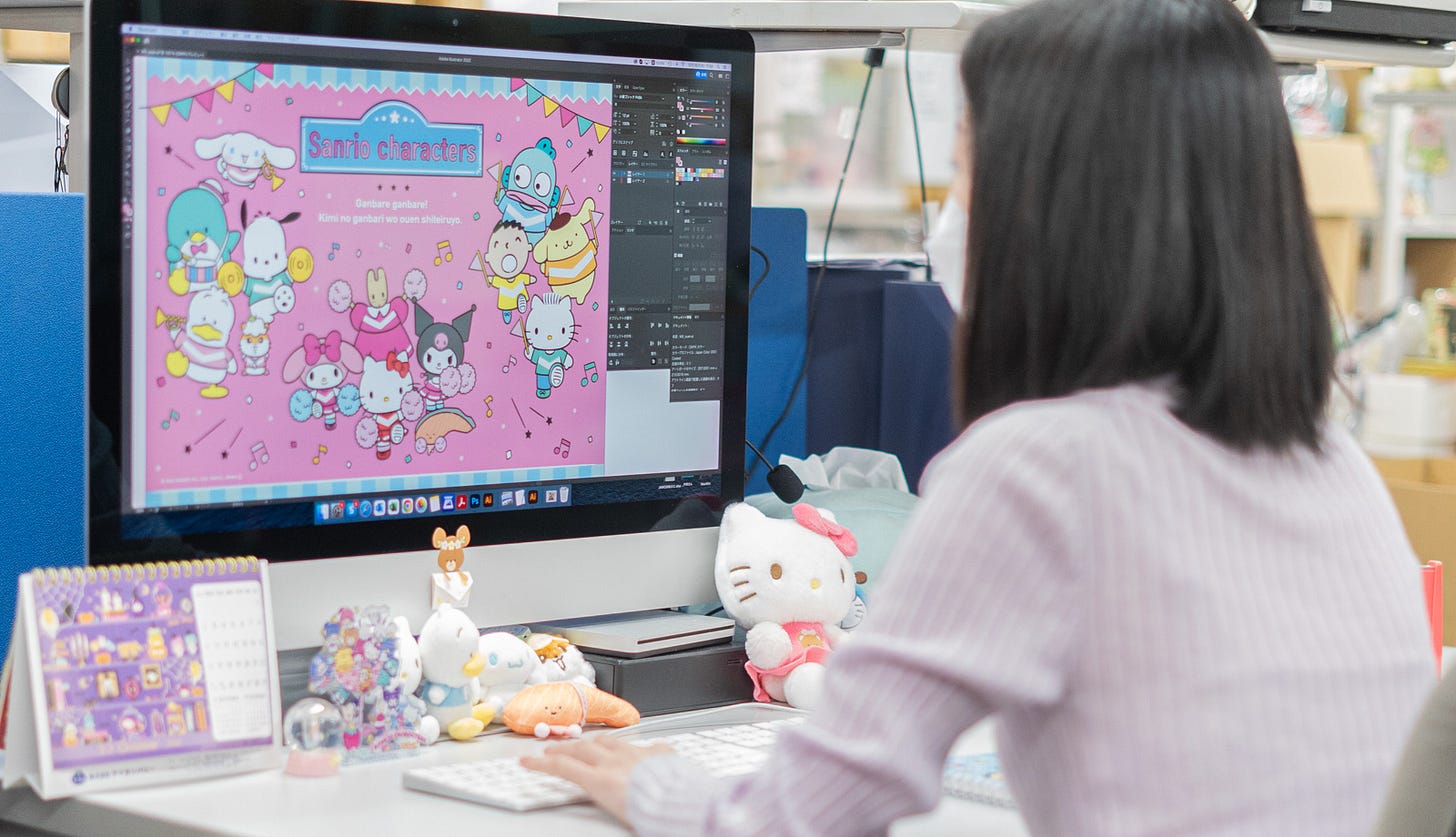Can Kawaii Rewire Your Brain? Japan Tests Hello Kitty as the Key to Workplace Happiness
Japanese pop culture news edited by Patrick Macias
Sanrio and neuroscientists found that kawaii characters can significantly raise brain happiness scores (BHQ) in the workplace.
A week-long study at Panasonic showed improved moods, stronger team engagement, and more smiles by adding cute items to desks and screens.
The research suggests that emotional responses to cuteness may boost creativity, productivity, and help revitalize Japan’s economy.
In a time when mental health and emotional well-being are more important than ever, even neuroscience in Japan is getting cute. Sanrio, the Japanese company behind Hello Kitty, Cinnamoroll, and Pochacco, has partnered with brain science firm Brain Impact and their BHQ (Brain Health Quotient) system to explore how “kawaii,” or cuteness, can improve happiness and productivity.
The joint research project, called the “Kawaii BHQ Study,” was officially announced during a press conference held at Sanrio Puroland on May 30, 2025. Speakers included Sanrio Entertainment President Aya Komaki and Professor Yoshinori Yamakawa of Kyoto University, who also serves as chairman of Brain Impact. Together, they laid out their vision to scientifically prove that emotional responses to cuteness can positively affect brain health and interpersonal communication.
Why Sanrio Is Collaborating with Neuroscience
Komaki reflected on her decades with Sanrio. “Over the years, I’ve seen so many people smile when they interact with cute characters. I began to wonder if that emotional reaction was doing more than just lifting spirits. Maybe it was also improving physical health and communication between people.” The emergence of BHQ as a measurable indicator of brain well-being gave her a way to test that idea.
Yamakawa explained that Japan’s struggling economy may be linked to stress, social conformity, and a lack of motivation. “We believe kawaii can serve as an accessible emotional stimulus. It might help people regain curiosity, feel safe, and reconnect with creativity,” he said.
Early Results Show Cuteness Lifts Brain Function
In a preliminary study at Panasonic, 22 employees took part in an experiment to evaluate the effect of kawaii on their brains. First, they used a tool called BHQ Search, developed by Brain Impact in collaboration with Kobe University, to determine which Sanrio character triggered the most positive response in their brain. Then they added that character’s merchandise to their desks or screens and continued working as usual for one week.
The data showed a marked improvement. Before the experiment, participants’ BHQ scores were lowest on Mondays and declined again toward Friday. After adding kawaii to the workplace, BHQ scores began higher at the start of the week and steadily improved by week’s end. “Monday scores jumped from around minus 0.8 to plus 0.5, and by Friday they reached almost 0.9,” said Yamakawa. “This suggests that a simple environmental shift using cute imagery can have real effects on mood and performance.”
Yes, Some Employees Wore Cinnamoroll Headbands
Panasonic’s Yoshihiko Namba helped oversee the study and shared his experience. “Honestly, wearing a character headband to work felt pretty embarrassing at first,” he said with a laugh. “But everyone joined in their own way. Some put plush toys on their desks, others used Sanrio characters as their desktop wallpapers. The whole office felt more relaxed and cheerful.”
According to the BHQ diagnostic, Namba’s brain favors Cinnamoroll. “So today, I’m wearing a Cinnamoroll headband. And surprisingly, there were a lot of Pochacco fans at the company too,” he added, getting a laugh from the room.
Kawaii, Creativity, and the Modern Workplace
Komaki emphasized that seeing something as “cute” can promote psychological safety, which is essential in creative and team-driven work environments. “Even if it feels a little silly, it can make the workplace warmer and friendlier,” she said. “I’m excited to see how many smiles we can create, how much productivity can rise, and whether this can give Japan’s economy a boost.”
Yamakawa agreed and pointed to the future. “As artificial intelligence advances, human creativity becomes even more valuable. And where ideas flourish, you will always find smiles and open communication. If kawaii can help support that, then brain science has an important role to play.”









